At the start of the 3rd and final trimester, life can feel exciting and overwhelming all at once. Find out what to expect at 7 months pregnant with advice from a Flo expert.
-
Tracking cycle
-
Getting pregnant
-
Pregnancy
-
Help Center
-
Flo for Partners
-
Anonymous Mode
-
Flo app reviews
-
Flo Premium New
-
Secret Chats New
-
Symptom Checker New
-
Your cycle
-
Health 360°
-
Getting pregnant
-
Pregnancy
-
Being a mom
-
LGBTQ+
-
Quizzes
-
Ovulation calculator
-
hCG calculator
-
Pregnancy test calculator
-
Menstrual cycle calculator
-
Period calculator
-
Implantation calculator
-
Pregnancy weeks to months calculator
-
Pregnancy due date calculator
-
IVF and FET due date calculator
-
Due date calculator by ultrasound
-
Medical Affairs
-
Science & Research
-
Pass It On Project New
-
Privacy Portal
-
Press Center
-
Flo Accuracy
-
Careers
-
Contact Us
7 months pregnant: Development and what to expect


Every piece of content at Flo Health adheres to the highest editorial standards for language, style, and medical accuracy. To learn what we do to deliver the best health and lifestyle insights to you, check out our content review principles.
At 7 months pregnant, you’re finally in the 3rd trimester. As this is the trimester you’ll get to meet your baby, it can be filled with anticipation, nerves, and excitement. Month 7 might feel like a good time to get some things checked off your to-do list. You might be planning your baby’s nursery, buying a stroller and other baby gear, or going on a well-deserved babymoon.
On the other hand, the 3rd trimester can bring new, less-than-exciting pregnancy symptoms. The changes can be uncomfortable — after all, your baby is starting to get pretty big inside your 7-month pregnant belly. To find out more about the symptoms and your baby’s development this month, Flo expert Dr. Renita White, obstetrician and gynecologist, Georgia Obstetrics and Gynecology, Georgia, US, gives us the lowdown.
And don’t forget: You can also learn about your pregnancy week by week by downloading a pregnancy-tracking app like Flo.
Key takeaways
- At 7 months pregnant, your baby gains lots of new skills, including opening their eyes, kicking, stretching, grasping, and hearing your voice.
- From 31 weeks pregnant, your baby will have finished most of their major development — but they’ve still got lots of growing to do.
- Many people find that fatigue returns in the 3rd trimester. You may also experience new symptoms like Braxton Hicks contractions, which are practice contractions and not linked to actual labor.
- You can follow the changes in your body and your baby using an app like Flo.
Take a quiz
Find out what you can do with our Health Assistant
Fetal development between weeks 28 and 31 of pregnancy
Seven months pregnant is a busy time for your baby, as they finish most of their major development this month. This means that from this point, they’ll be pretty much fully formed; they just need to grow and gain weight.
Along with gaining new skills in movement, their senses significantly mature this month. “At this stage, the fetus can now hear,” says Dr. White. “They may respond to sound and light stimuli. The fetus also continues to gain more body fat and grow longer.”

Week 28
The first time you hear your baby cry after birth can be a moment you’ll never forget. But amazingly, at 28 weeks pregnant, they are practicing crying facial expressions inside your uterus. It’s not all unhappy faces, though. Between 24 and 35 weeks pregnant, they may also start practicing the facial movements needed for laughing.
And that’s not the only way your baby is preparing for your first meeting. This week, they may also be starting to turn head-down in your uterus to get ready for birth.
Week 29
It might feel like your baby’s movements have taken on a different quality lately. It’s not all in your head. At 29 weeks pregnant, your baby is able to kick, stretch, and make grasping movements. “At 7 months pregnant, you should be feeling all of the baby’s movements,” says Dr. White. “You will continue to feel rapid jabs and kicks.”
In other news, this week, your baby might be losing their protective coating. Called the vernix caseosa, your baby started producing this coating back in week 19. The substance has been protecting their delicate skin from the amniotic fluid (which can cause abrasions, chapping, and hardening) and regulating their temperature. A layer of fine hair — called lanugo — has been helping to keep the coating in place. At 29 weeks, that hair may also start to fall off.
However, not all babies lose their vernix caseosa and lanugo this early — in fact, some babies still have these protective features when they are born.
Week 30
At 30 weeks pregnant, your baby’s eyes are able to open. Their eyesight will continue to develop after they are born, though. By the time they are three months old, they’ll be able to follow moving objects with their eyes and reach for things. By five months, they should have good color vision — but it won’t be as sophisticated as an adult’s.
Week 31
By now, your baby will be able to hear voices and music from the outside world. They may be getting familiar with your voice in particular, plus other voices they often hear around them, like your partner’s. They’re also able to distinguish between different types of sounds — like loud or quiet noises — and may become calmer in response to soothing music. This can be the ideal time to try chatting with your baby if you haven’t already or to introduce your baby to your favorite playlists.
At 31 weeks pregnant, your baby has officially finished most of their major development. In fact, your baby is now looking more baby-like, with plumper, smoother skin. Currently the size of a zucchini, your baby’s next job is to start rapidly gaining weight.
Symptoms you might experience when 7 months pregnant
As your baby grows, things can get increasingly uncomfortable during the 3rd trimester. You may find yourself feeling more tired and irritable. “Fatigue may return at this stage of pregnancy,” says Dr. White.
Besides having a rapidly expanding bump, this month, you may notice other new symptoms (although, do remember that everyone experiences pregnancy differently). “Heartburn may start or worsen,” says Dr. White. “Braxton Hicks contractions may also start to occur now.”
Let’s look at the possible 3rd-trimester symptoms in more detail.
Braxton Hicks contractions
These contractions are your body’s way of preparing for labor. However, they are different from true labor contractions as they don’t cause your cervix to dilate or culminate in birth. They are irregular and uncomfortable rather than painful — a bit like mild menstrual cramps. Find out more via our guide on what Braxton Hicks contractions feel like.
Peeing more
Your baby can press against your bladder as they move further into your pelvis, making you feel like you need to pee more.
Insomnia
Unfortunately, it’s common for sleep to suffer in the 3rd trimester, thanks to needing to pee more during the night and the challenge of finding a comfy position with a pregnant belly.
Fatigue
Due to sleep troubles and the extra weight you’re carrying, it’s common to feel more tired in the 3rd trimester. However, fatigue can also be a sign that your iron levels are low, so it’s worth speaking to your doctor about doing a blood test to check this out.
Back pain
All that baby growth can, unfortunately, come with backaches during the 3rd trimester as your body adjusts to carrying the extra weight.

Nesting
Contrasting symptoms of fatigue, you might experience bursts of nesting energy in the 3rd trimester. If you’re feeling the urge to deep clean your home or plan cute baby outfits, embrace it.
Swelling
Fluid retention can increase around now, which, along with weight gain, can cause your ankles and feet to swell. Our guide on how to reduce swelling during pregnancy might help.
Hemorrhoids
Unfortunately, hemorrhoids are common in pregnancy, caused by increased pressure on the veins in your anus, increased blood volume, and greater chances of constipation.
Varicose veins
These lumpy-looking veins are caused by the increased hormones and pressure of the baby on your blood vessels.
Leg cramps
These can often strike at night as your pregnancy progresses.
Heartburn
Pregnancy hormones can relax the valve between your stomach and esophagus, causing stomach acid to leak through and result in heartburn during pregnancy.
Constipation
The increase in hormones can slow down your digestive system and lead to constipation.
Some of these symptoms can understandably leave you feeling like you are not in the best mood. However, it’s not just the physical changes that can affect your mood. “It is not uncommon to feel anxiety as you get closer to your due date,” says Dr. White. “At this stage, the pregnant person is probably getting set up for their baby’s arrival, such as decorating the nursery, installing the car seat, and picking a pediatrician. This can trigger many emotions.”
If you’re feeling worried, frustrated, or overwhelmed, know that that’s totally normal. It’s important not to beat yourself up if you’re finding things hard. Instead, lean on your loved ones for support and be extra gentle with yourself as you navigate the enormous changes happening in your life and to your body. You’re doing amazingly.
Moving into the 3rd and final trimester of pregnancy
The 3rd trimester can be tough on your body with new aches, pains, and fatigue. It can be emotionally challenging too. You may feel a little uncertain about birth and life postpartum. Whether you’ve had a child before or not, it can be tough to picture what life will be like. However, discovering what your body is capable of can be an incredible experience. Plus, being on the homestretch means you’re getting closer and closer to meeting your baby.
Dr. White recommends getting plenty of rest and drinking lots of water at this stage. “This could also be a great time to start taking prenatal classes to prepare for the labor and delivery experience,” she says. Prenatal classes can introduce you to other parents-to-be, too, helping you expand your support system.
Flo’s pregnancy-tracking app also has plenty of advice on how to prepare for labor and stay on top of your 3rd-trimester checklist. You can also share any worries you have with other pregnant people via our anonymous chatroom, Secret Chats. But as always, if you have any concerns about your pregnancy or birth, don’t hesitate to have a chat with your doctor.
More frequently asked questions about being 7 months pregnant
Is it safe to deliver at 7 months pregnant?
A baby born at 7 months pregnant would be considered very preterm. Premature babies can have serious health problems, but they don’t always. A baby born at 7 months may need special care in a neonatal intensive care unit (NICU).
Is the baby fully developed at 7 months pregnant?
Although your baby will finish most of their major development this month, they’re not fully developed yet. For example, as well as gaining lots of weight, their lungs, brain, and nervous system continue to develop beyond the 7th month of pregnancy.
How big is a seven-month pregnant belly?
“The fundal height measurement [the distance between the pubic bone and the top of your uterus] should align with the number of weeks you are,” says Dr. White. “Someone’s fundal height could be in a normal range, but that person’s belly can look bigger or smaller compared to someone else’s belly because everyone shows differently.”
Why is the 7th month of pregnancy so important?
During the 7th month of pregnancy, your baby’s senses mature to the point that they can see and hear most stimuli. They also start developing reserves of body fat and gain the ability to kick, stretch, and make grasping movements.

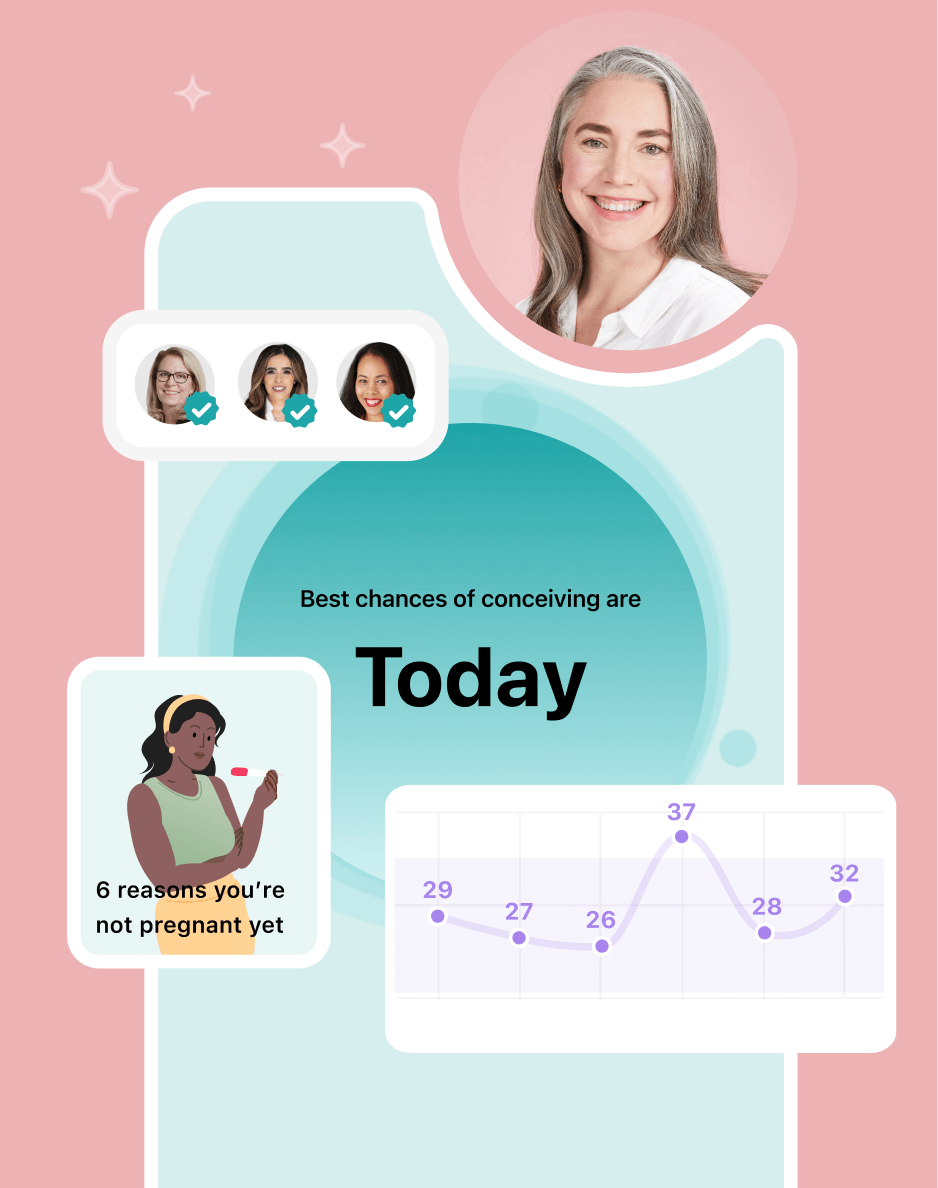
Hey, I'm Anique
I started using Flo app to track my period and ovulation because we wanted to have a baby.
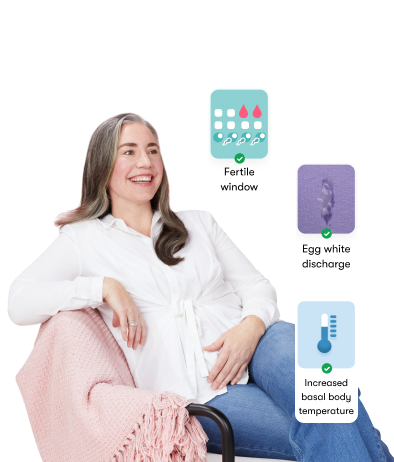
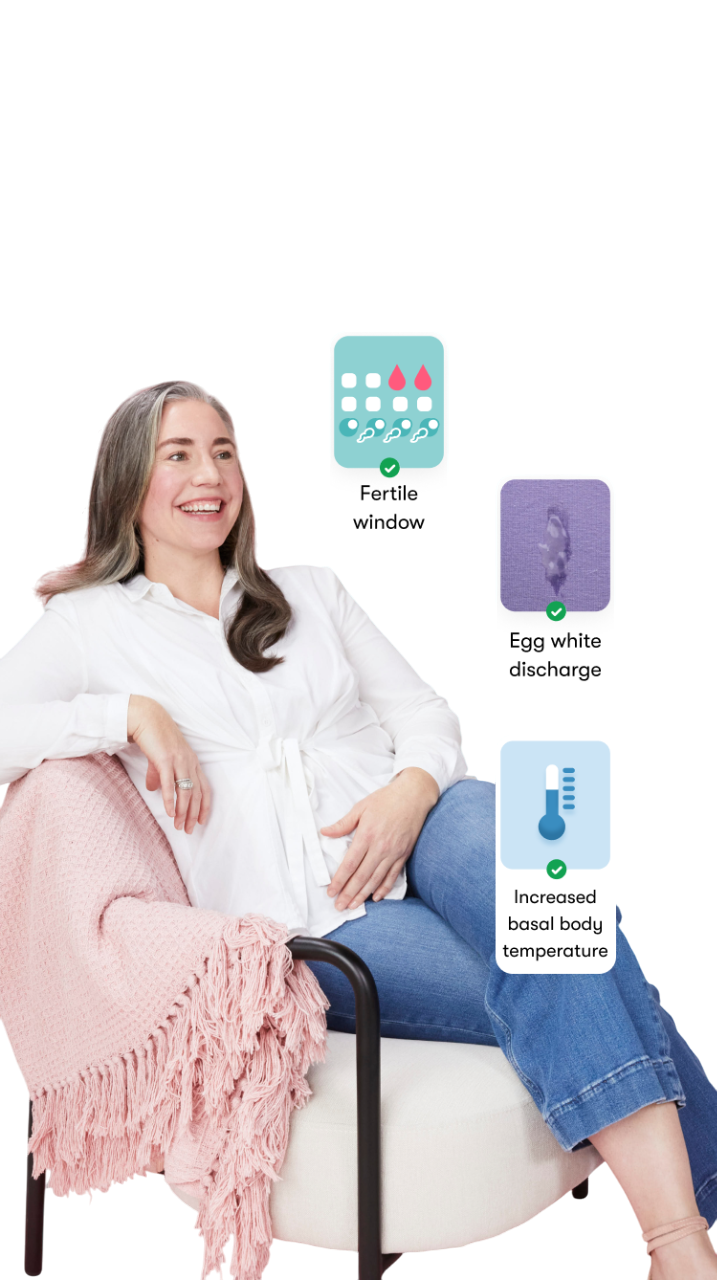
The Flo app helped me learn about my body and spot ovulation signs during our conception journey.
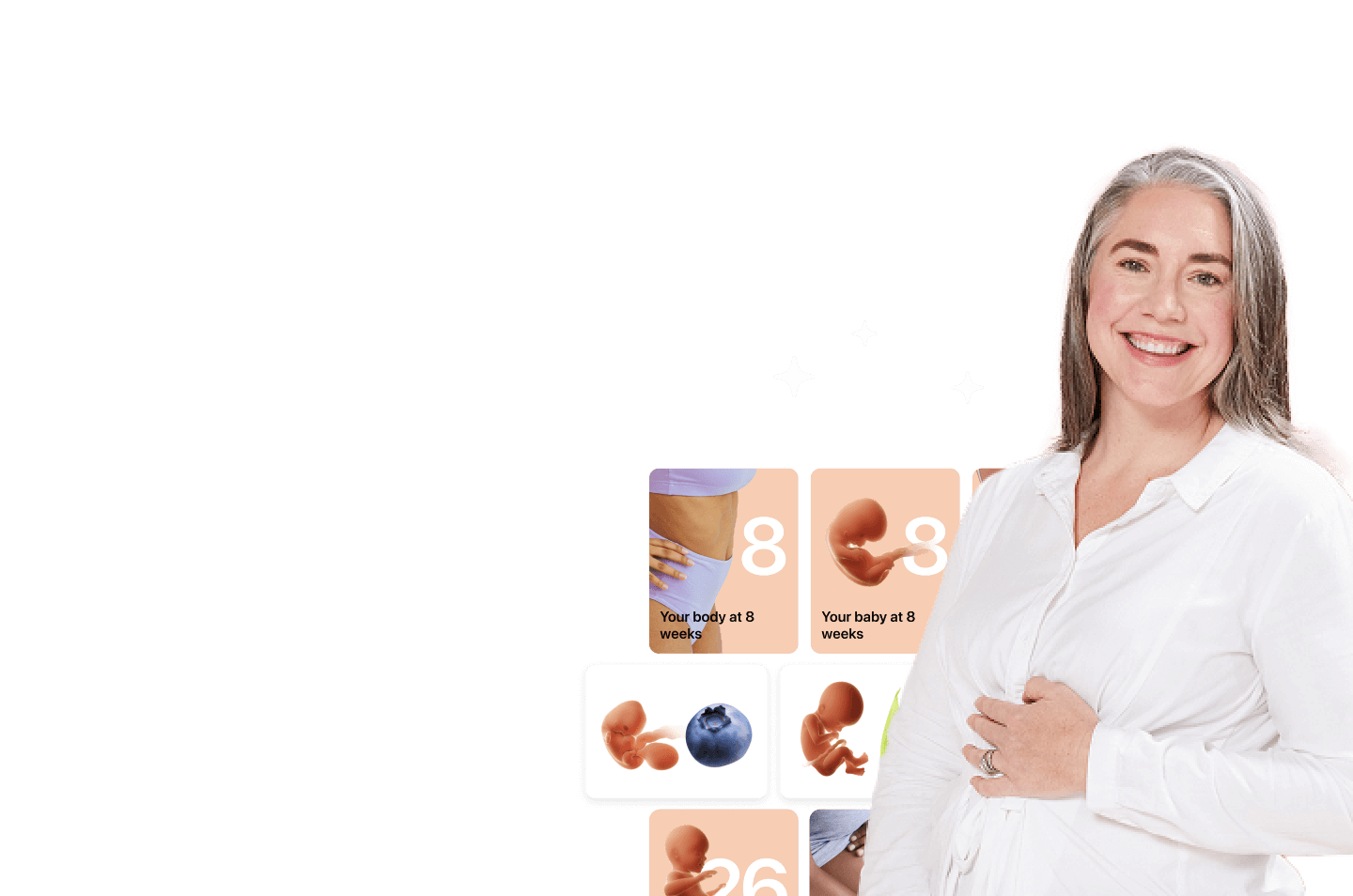
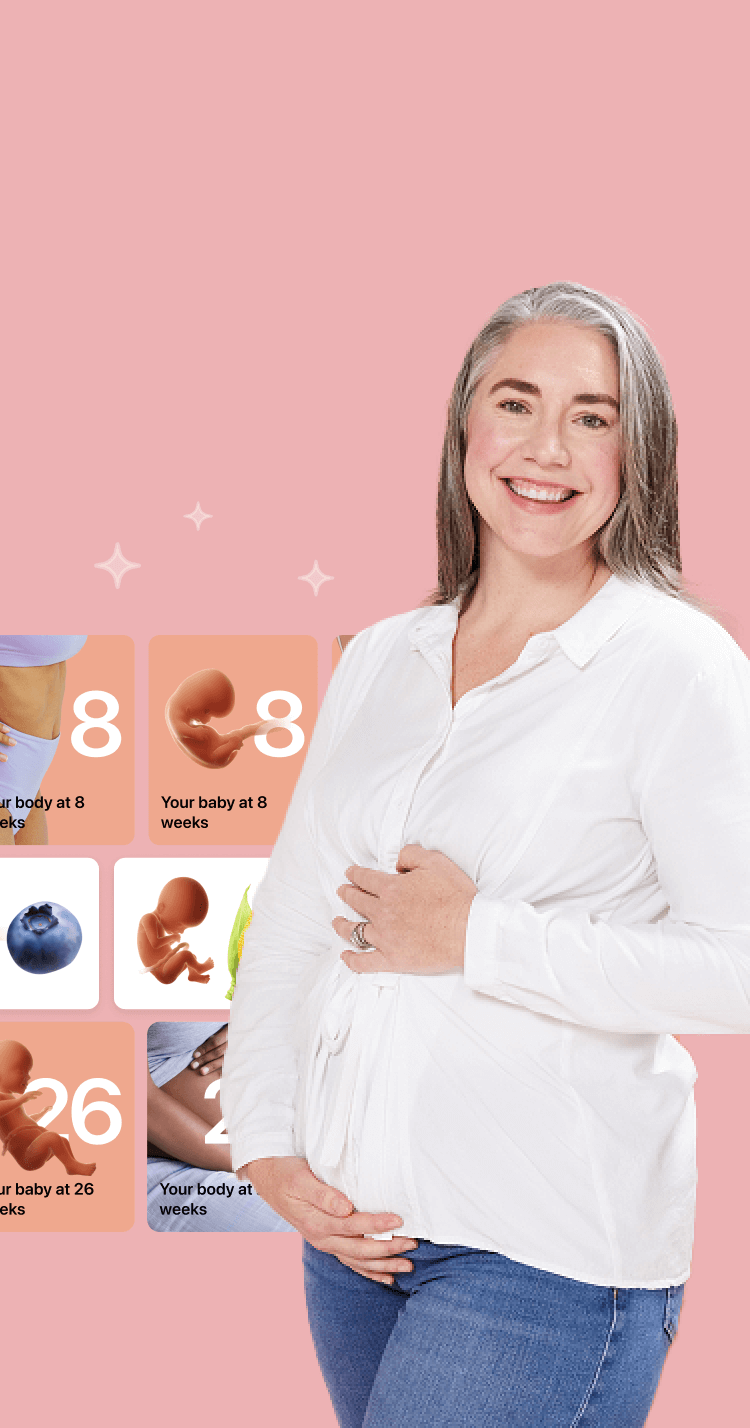
I vividly
remember the day
that we switched
Flo into
Pregnancy Mode — it was
such a special
moment.
Real stories, real results
Learn how the Flo app became an amazing cheerleader for us on our conception journey.
References
“1st Trimester Pregnancy: What to Expect.” Mayo Clinic, 27 Feb. 2024, www.mayoclinic.org/healthy-lifestyle/pregnancy-week-by-week/in-depth/pregnancy/art-20047208.
“2nd Trimester Pregnancy: What to Expect.” Mayo Clinic, 7 Feb. 2025, www.mayoclinic.org/healthy-lifestyle/pregnancy-week-by-week/in-depth/pregnancy/art-20047732.
“3rd Trimester Pregnancy: What to Expect.” Mayo Clinic, 7 Feb. 2025, www.mayoclinic.org/healthy-lifestyle/pregnancy-week-by-week/in-depth/pregnancy/art-20046767.
“About Noise and Reproductive Health.” Center for Disease Control and Prevention, 15 Dec. 2023, www.cdc.gov/niosh/reproductive-health/prevention/noise.html.
“Braxton Hicks Contractions.” Cleveland Clinic, my.clevelandclinic.org/health/symptoms/22965-braxton-hicks. Accessed 27 Feb. 2025.
“Changes during Pregnancy.” The American College of Obstetricians and Gynecologists, www.acog.org/womens-health/infographics/changes-during-pregnancy. Accessed 27 Feb. 2025.
Chorna, O., et al. “Neuroprocessing Mechanisms of Music during Fetal and Neonatal Development: A Role in Neuroplasticity and Neurodevelopment.” Neural Plasticity, vol. 2019, Mar. 2019, doi:10.1155/2019/3972918.
“Developmental Milestones: 3 Months.” Healthychildren.org, 1 June 2009, www.healthychildren.org/English/ages-stages/baby/Pages/Developmental-Milestones-3-Months.aspx.
“Fetal Development.” Cleveland Clinic, my.clevelandclinic.org/health/articles/7247-fetal-development-stages-of-growth. Accessed 27 Feb. 2025.
“Fetal Development: The 2nd Trimester.” Mayo Clinic, 3 June 2022, www.mayoclinic.org/healthy-lifestyle/pregnancy-week-by-week/in-depth/fetal-development/art-20046151.
“Fetal Development: The 3rd Trimester.” Mayo Clinic, 3 June 2022, www.mayoclinic.org/healthy-lifestyle/pregnancy-week-by-week/in-depth/fetal-development/art-20045997.
“Fundal Height.” Cleveland Clinic, my.clevelandclinic.org/health/diagnostics/22294-fundal-height. Accessed 27 Feb. 2025.
Gingras, J. L., et al. “Fetal Homologue of Infant Crying.” Archives of Disease in Childhood. Fetal and Neonatal Edition, vol. 90, no. 5, Sep. 2005, pp. F415–18, doi:10.1136/adc.2004.062257.
“Hemorrhoids during Pregnancy.” Cleveland Clinic, my.clevelandclinic.org/health/diseases/23498-pregnancy-hemorrhoids. Accessed 27 Feb. 2025.
“Infant Vision: Birth to 24 Months of Age.” American Optometric Association, www.aoa.org/healthy-eyes/eye-health-for-life/infant-vision?sso=y. Accessed 27 Feb. 2025.
“Lanugo.” Cleveland Clinic, my.clevelandclinic.org/health/body/22487-lanugo. Accessed 27 Feb. 2025.
“Premature Birth.” Mayo Clinic, 22 Mar. 2024, www.mayoclinic.org/diseases-conditions/premature-birth/symptoms-causes/syc-20376730.
“Preterm Birth.” World Health Organization, 10 May 2023, www.who.int/news-room/fact-sheets/detail/preterm-birth.
“Iron Deficiency Anemia during Pregnancy: Prevention Tips.” Mayo Clinic, 31 Jan. 2025, www.mayoclinic.org/healthy-lifestyle/pregnancy-week-by-week/in-depth/anemia-during-pregnancy/art-20114455.
Reissland, Nadja, et al. “Do Facial Expressions Develop before Birth?” PLOS ONE, vol. 6, no. 8, 31 Aug. 2011, doi:10.1371/journal.pone.0024081.
Singh, Gurcharan, and G. Archana. “Unraveling the Mystery of Vernix Caseosa.” Indian Journal of Dermatology, vol. 53, no. 2, 2008, pp. 54–60, doi:10.4103/0019-5154.41645.
“Staying Comfortable in the Third Trimester.” Northwestern Medicine, May 2022, www.nm.org/healthbeat/healthy-tips/staying-comfortable-in-the-third-trimester.
“Third Trimester.” Cleveland Clinic, my.clevelandclinic.org/health/articles/third-trimester. Accessed 27 Feb. 2025.
“Varicose Veins While Pregnant.” Cleveland Clinic, my.clevelandclinic.org/health/diseases/23331-varicose-veins-in-pregnancy. Accessed 27 Feb. 2025.




